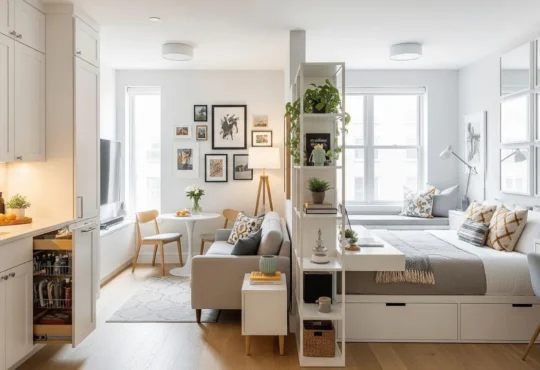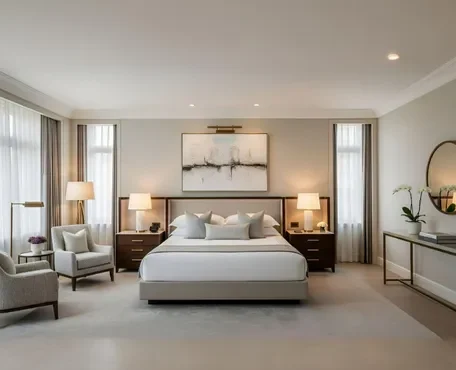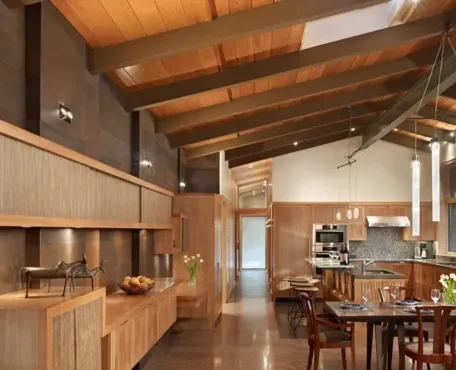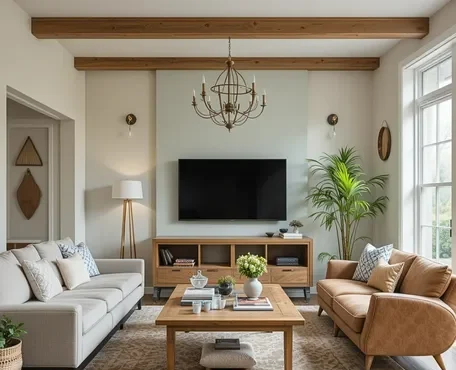
Keeping a home organized can feel overwhelming, especially with busy schedules, family routines, and endless belongings. But with the right approach, you can transform your living space into a calm, functional haven. Here’s a guide from the perspective of a professional home organizer, featuring 22 practical and creative tips to help you organize your home efficiently.
1. Start with a Vision

Before diving into clutter, imagine how you want your home to feel. Cozy, minimalistic, playful? Creating a vision board or sketching floor layouts can guide your decisions. Focus on lifestyle priorities—like creating dedicated zones for work, relaxation, or hobbies—and consider natural light and traffic flow. A clear vision not only streamlines organizing but also ensures your space supports well-being and daily efficiency.
2. Declutter Ruthlessly

Let go of items you don’t use or love. A professional tip: ask yourself, “Have I used this in the past year?” If not, it might be time to donate or recycle. Take it a step further by categorizing items into ‘keep,’ ‘donate,’ and ‘maybe’ boxes, and tackle one room at a time. This method prevents overwhelm and creates noticeable progress, making your home feel lighter and more intentional.
3. Room by Room Focus

Tackle one room at a time. This prevents overwhelm and gives you a tangible sense of accomplishment as each space transforms. Enhance this approach by setting small, timed goals—like 30 minutes per zone—and documenting before-and-after photos. It keeps motivation high and helps you track progress, turning organization into a satisfying, visual journey.
4. Categorize Items

Sort belongings into categories like “keep,” “donate,” “store,” or “relocate.” Label boxes or bins to keep your system clear and intuitive. For added efficiency, group items by frequency of use or purpose—everyday essentials within easy reach and seasonal or seldom-used items neatly stored. This strategy simplifies daily routines and ensures your space stays organized long-term.
5. Invest in Clear Storage

Transparent containers make it easy to see contents at a glance. This reduces time spent searching for items and creates a visually organized look. Combine clear storage with uniform labeling and stackable designs to maximize space efficiency, protect belongings, and maintain a sleek, clutter-free aesthetic throughout your home.
6. Use Vertical Space

Shelves, wall hooks, and tall storage units help maximize space, especially in small rooms or apartments. Don’t forget the back of doors! Incorporate multi-level shelving and hanging organizers to fully utilize height, keeping floors clear and creating a sense of openness while making every inch of your space functional and accessible.
7. Create a Command Center

Designate an area for keys, mail, schedules, and important documents. A centralized hub reduces clutter and keeps the household running smoothly. Enhance it with labeled compartments, a charging station, and a family calendar to streamline daily routines, ensuring everyone knows where essentials are while maintaining a neat, organized entryway or kitchen corner.
8. Label Everything

Labels make maintenance effortless. Even in decorative spaces, small, tasteful tags can guide family members to put items back in their proper place. Consider color-coding by category or room, and use durable, stylish materials like chalkboard, wood, or clear adhesive labels to blend function with aesthetics while reinforcing organization habits.
9. Use Multi Functional Furniture

Ottomans with storage, beds with drawers, and extendable tables allow you to combine style and functionality seamlessly. Choose pieces that serve double purposes, like a sofa with hidden compartments or a desk that converts to a dining table, to maximize space efficiency without sacrificing design or comfort.
10. Keep Daily Essentials Accessible

Store frequently used items at eye level or within easy reach. Less-used items can go higher or lower, creating a natural flow. Organize by routine—morning, evening, or work-related items—to save time and reduce friction in daily tasks, making your home more intuitive and effortless to navigate.
11. Digital Decluttering

Organize digital life alongside physical spaces. Clean email inboxes, digital photos, and files regularly to reduce mental clutter. Use folders, cloud storage, and consistent naming conventions, and schedule monthly “digital declutter” sessions to maintain focus, boost productivity, and create a clear, stress-free virtual environment.
12. “One In, One Out” Rule

To maintain organization, adopt this simple habit: whenever you bring in a new item, let go of one old item. This practice prevents clutter from accumulating, encourages mindful purchasing, and helps sustain a balanced, intentional home where every item has a purpose.
13. Rotate Seasonal Items

Store seasonal clothing, decor, or gear in bins or vacuum-sealed bags. Rotate items based on the season to save space and keep things fresh. Label each container clearly and store them in accessible spots like under-bed drawers or high shelves, making seasonal transitions smooth while keeping your living space uncluttered year-round.
14. Create Zones

Designate areas for specific tasks or activities—reading nooks, homework corners, or craft stations. Zones keep clutter contained and purpose-driven. Enhance each zone with appropriate storage, lighting, and seating to encourage use, making your home more organized, functional, and enjoyable for every activity.
15. Keep Surfaces Clear

Minimal surfaces visually expand a space and reduce stress. Limit décor items to essentials and decorative accents that spark joy. Adopt a “less is more” mindset by regularly clearing countertops, tables, and shelves, which not only makes cleaning easier but also creates a calming, open environment that feels intentional and serene.
16. Use Drawer Dividers

Small compartments for utensils, stationery, or cosmetics make drawers neat and prevent items from getting lost in the shuffle. Opt for adjustable or modular dividers to customize each drawer’s layout, maximizing space efficiency and ensuring everything has a designated spot for effortless daily access.
17. Establish Daily Routines

Spend 5–10 minutes each day tidying high-traffic areas. Daily upkeep prevents mess from snowballing into overwhelming chaos. Incorporate simple habits like making the bed, clearing countertops, and putting items back in their zones to maintain order effortlessly and keep your home consistently welcoming.
18. Create a Donation Station

Keep a box or bag in a convenient location for items you no longer need. When full, donate it immediately—no procrastination. Place it near entryways or closets to make decluttering habitual, and consider tracking donations monthly to celebrate your progress and maintain a clutter-free, generous home.
19. Repurpose Unused Spaces

Under the bed, empty corners, or attic nooks can be transformed into hidden storage areas, making the most of your home’s potential. Use stylish baskets, rolling bins, or custom shelving to keep these areas functional yet tidy, turning overlooked spots into practical, organized extensions of your living space.
20. Color Code for Simplicity

Use color-coded bins, folders, or labels for family members, seasons, or categories. Visual cues make organization intuitive and fun. Combine with consistent placement and clear labeling to speed up cleanup, reduce confusion, and create a visually appealing system that everyone in the household can easily follow.
21. Prioritize Maintenance

Organization isn’t a one-time event. Schedule seasonal refreshes, inventory checks, and decluttering sessions to sustain order over time. Set reminders or calendar alerts for quarterly reviews, and involve the whole household to keep spaces functional, clutter-free, and aligned with your evolving lifestyle.
22. Add Personal Touches

Organization doesn’t mean sterility. Incorporate meaningful decor, art, or keepsakes to make your home feel inviting while staying functional. Blend practicality with personality by displaying cherished items in curated spaces—like a memory shelf or framed photo wall—to create warmth and authenticity without adding clutter.
Conclusion
Efficient home organization is a blend of strategy, creativity, and routine. By following these 22 tips, you’ll not only reclaim your space but also create an environment that nurtures calm, productivity, and joy. Remember: a well-organized home is a reflection of a well-ordered life.
Here are some frequently asked questions related to the article :
1. What does a professional home organizer do?
A professional home organizer helps you arrange your spaces efficiently, reduce clutter, and create sustainable organization systems for your home.
2. How do I start organizing my home if it’s very messy?
Start with one area, like the living room or kitchen, and sort items into categories: keep, donate, or discard.
3. What are the essential tools for home organization?
Storage bins, shelving units, laundry baskets, labels, and small organizing tools can make a big difference in keeping things in order.
4. Are there daily habits to maintain an organized home?
Yes—return items to their proper places after use, clean surfaces regularly, and review clutter weekly to stay on top of organization.
5. How do I manage a large pile of clothes?
Sort clothes by type and season, donate what you no longer need, and use smart folding or hanging systems to save space.
6. Does home organization improve mental health?
Absolutely—an organized home reduces stress, improves focus, and creates a calmer, more productive environment.
7. How long does it take to fully organize a home?
It depends on the home size and clutter level, but with a step-by-step plan, you can see noticeable results within a few days, with weekly maintenance to keep it organized.
The princess home on Pinterest










